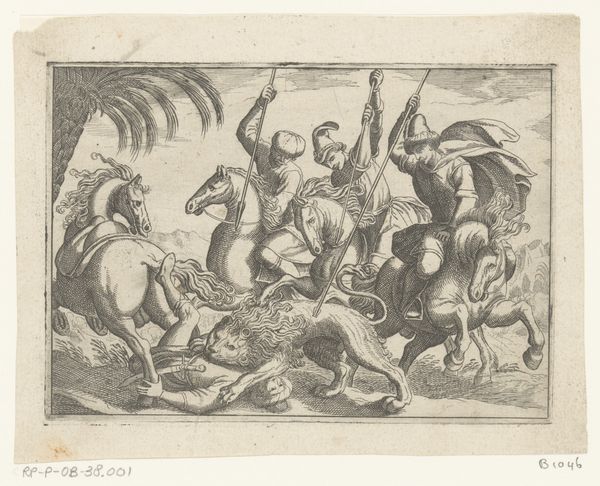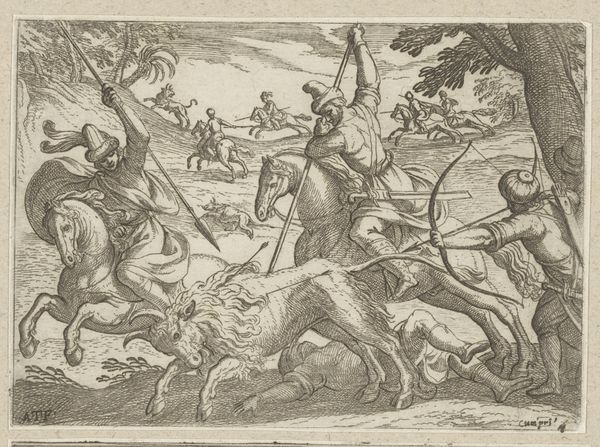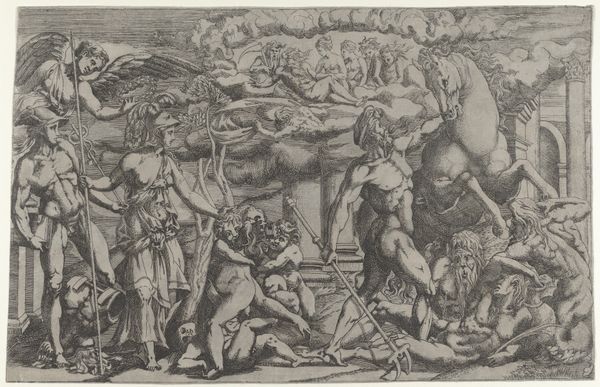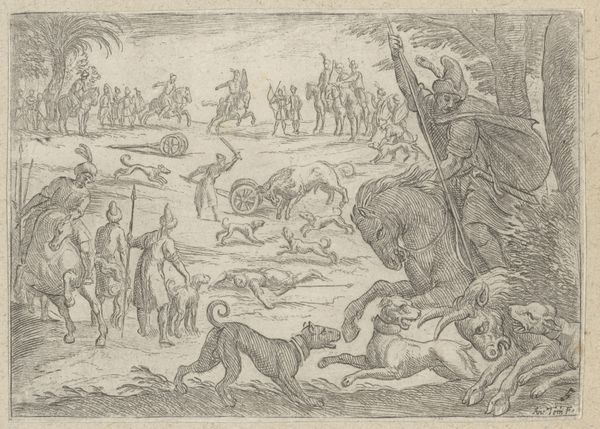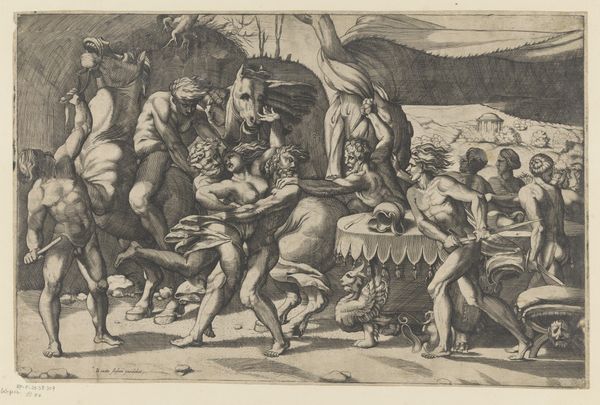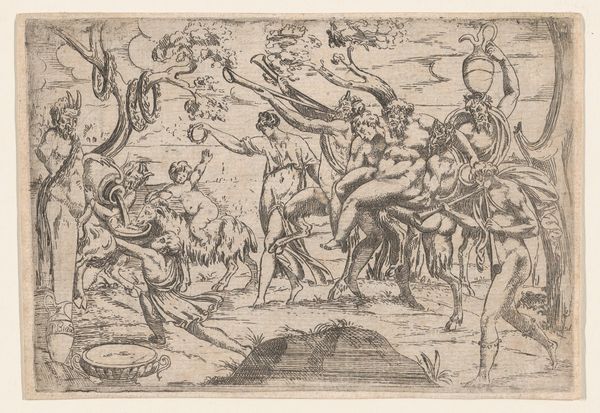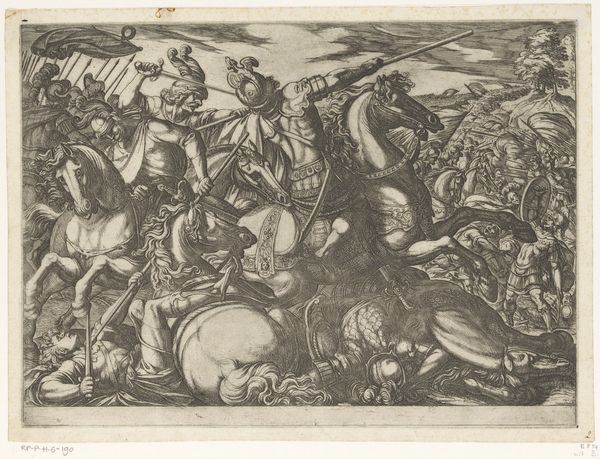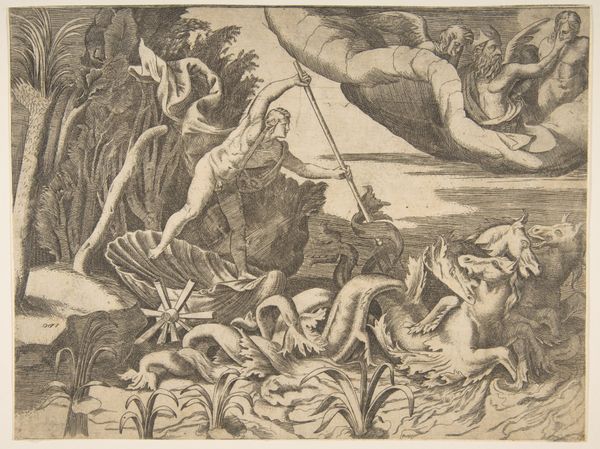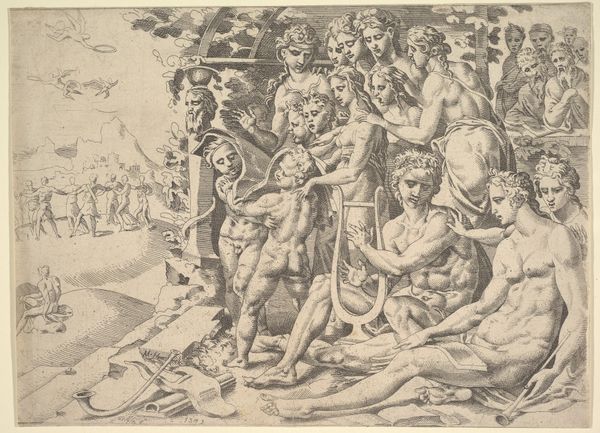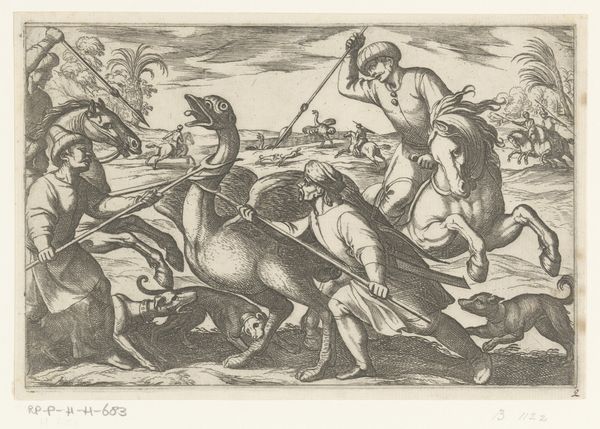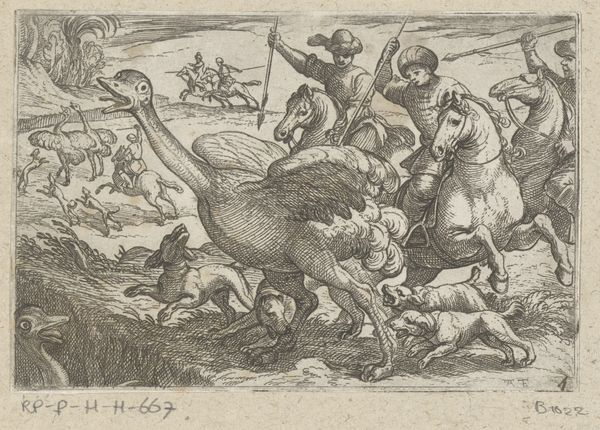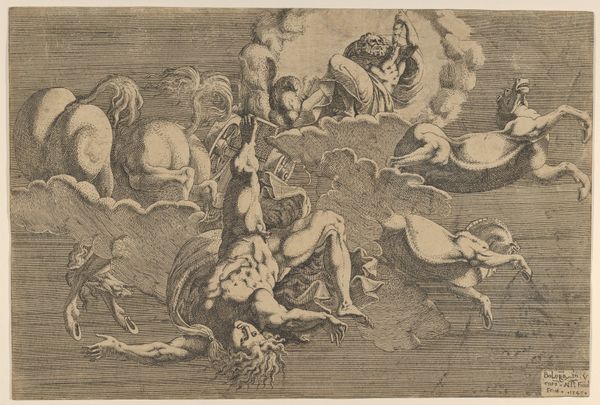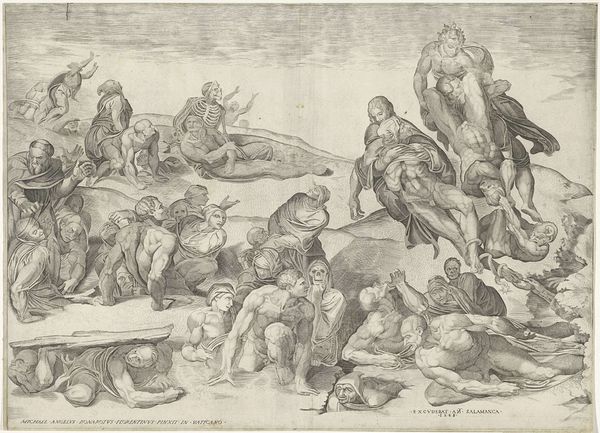
drawing, print, paper, ink, engraving
#
drawing
#
narrative-art
#
baroque
# print
#
landscape
#
classical-realism
#
figuration
#
paper
#
ink
#
line
#
genre-painting
#
history-painting
#
engraving
Dimensions: height 101 mm, width 140 mm
Copyright: Rijks Museum: Open Domain
Curator: Look at this scene— "Lion Hunt with a Lion Killing a Man," dating from 1598, attributed to Antonio Tempesta and currently housed in the Rijksmuseum. It's an engraving on paper. My first impression is one of controlled chaos, a ballet of violence rendered with remarkable precision in line. Editor: The scene hits hard. There's so much happening, so much overt conflict! It highlights a certain colonial aggression presented with detailed human struggle and animal brutality. Is this simply about bravery or does it reflect darker socio-political power dynamics? Curator: The hunt was often depicted as a noble pursuit and Tempesta’s version can certainly be seen in that light, connecting back to historical representations of man conquering nature, as expressed through Classical and Baroque styles that influenced Tempesta. It’s impossible to look at art outside of such systems. Editor: Absolutely. How were people of color participating in hunts in 1598 and how were they being treated? The "civilized" spectacle for elites contrasts vividly with the brutal death beneath the lion’s claws. Is that victim expendable within this narrative? This print raises questions of who benefits and who pays. Curator: Exactly. Prints like this circulated widely, and likely served diverse functions. Some bought into the notion of nobility, power, and control. But I’m also very keen on discussing Tempesta's choice of engraving, his mastery with ink... Editor: Yes, let’s bring those details into this too. Consider also the act of reproducing such scenes to mass distribution, creating public sentiments. The way we circulate images even today dictates a narrative of power and justice... and these, still, carry historical weights. Curator: What's striking, even looking past the action, is how much is suggested rather than explicitly stated through the print making. These choices helped define a social viewpoint. Editor: Looking at how these historical scenes are staged makes me think about how spectacle can legitimize authority even in the most graphic or terrible ways. I find my focus shifting from merely aesthetics toward actively unpacking its underlying frameworks of power and subjugation. Curator: Understanding its influence as history through aesthetic choices is what makes engaging with works from any period valuable for a deeper knowledge.
Comments
No comments
Be the first to comment and join the conversation on the ultimate creative platform.
